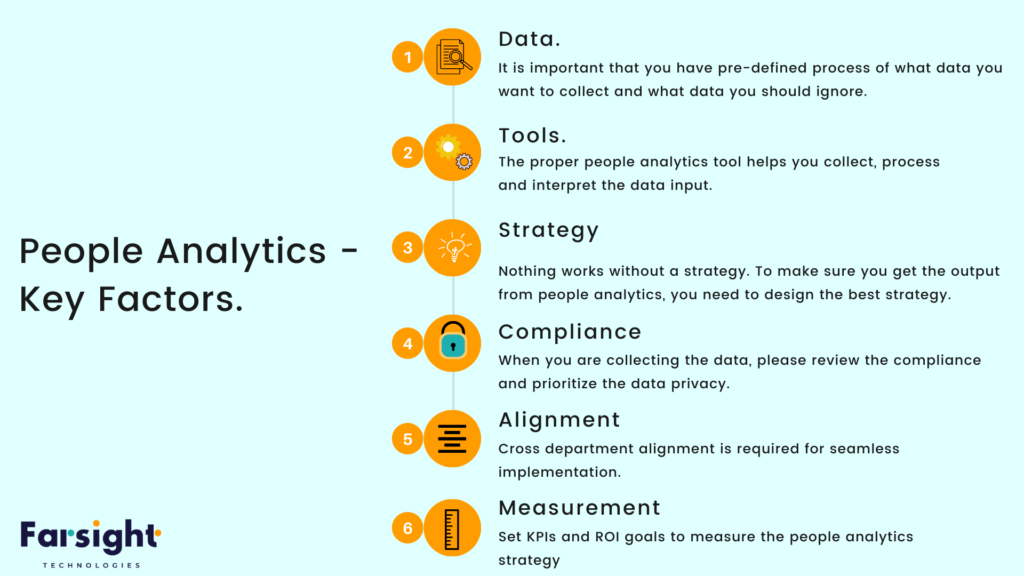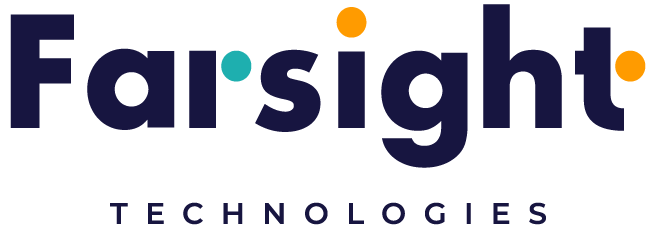People Analytics and Business objectives.
Introduction:
We are living in a world where data is oil. With every minute that passes, you probably receive more data you have. Our digital-first growth has made everything dependable on data input. But like oil, it is essential to process the data, to leverage it to its fullest.
It is where analytics comes in, where we bring the data into life.
In this blog post, we will learn the fundamentals of people analytics, how to use employee data to boost business function and how to align the business goals with H.R. function.
What is people Analytics?
People analytics is data-driven learning of various aspects of processes, functions, challenges and opportunities at work.
People analytics is also known as H.R. Analytics or talent analytics. People Analytics was coined back in 2007 at Google. Although the term is commonly used since 2007, People analytics has existed since the 19th century; organisations used some data touch-points to analyse the predicted employee behaviour. Those days, the application of people analytics was limited.
What do H.R. need to know about people analytics?
If you are H.R., you are probably using people analytics. People analytics is about using major data points to make business-related decisions. Whether you have the people analytics tech present or not – you constantly record people data.
But when you do it manually or rely on your guts, you get the wrong data and so the wrong decision. So for H.R., It is essential to know what data is good in people analytics, how you can improve the human resources department and how the employer can succeed to align their goals with H.R.


The critical elements of people analytics you need to take into account before you start using people analytics.
1. Data.
You need to define what data you want to collect and process. You would like to consider the data which is aligned to business growth. It does not just make the process more lean but effective.
2. Tools.
To collect, process and interpret, you will need a great people analytics tool which is also integrated with HRMS. Choosing the right tool is essential to guarantee the best outcome.
3. Strategy
Nothing works without a strategy. Your people analytics process will need to have one full-proof strategy that helps you implement the decision and align business goals to H.R. function.
4. Compliance
It should be your top priority to collect the complaint data. You need to customize the tools and strategy to follow regional data collection and processing compliance. Above the law, it is our moral responsibility that we implement clean data practices..
5. Alignment
People analytics is not just H.R.s responsibility. To ensure an efficient people analytics process, you have to keep every department in a loop. The greater alignment brings more significant results.
6. Measurement
What you implement needs to be measured. It would help if you tracked KIPs and ROI goals with people analytics. It would be best if you align the business goal with the people’s analytics.
How do people analytics help the H.R Department to meet business objectives?
You must have been asking this question after having all these processes and tools – how can businesses benefit from people analytics? We got you back.
Key business objectives and people analytics use cases:
1. Acquiring the right talent.
Growth comes from people. Your company’s growth is highly dependent on the people you hire. No surprise, all businesses strive to hire the best talent. People analytics help you screen the best talent by reducing emotional biases. The right set of data, historical behavior data, technical expertise and pre-defined touch-points enable you to screen the best talent from the industry. Although hiring is human, it is the best way to balance automation, data analytics and human touch during on-boarding processes.
2. Building top-notch employee experience
Employee Experience is not a buzzword anymore. Companies across the globe have started understanding that if they want to win in the market, they have to win at the workplace. Building inclusive culture, nurturing people, and giving them exceptional work experience help companies hire and retain the best industry talent. People analytics help you identify the loopholes that are weakening your culture. It includes timely feedback, interview and interpretation of indirect signals. By acting on the data, you can improvise the culture and build an exceptional employee experience.
A great employee experience directly impacts customer satisfaction, churn rate and employee wellness.
3. Learning and development of people:
Predictive future analytics help you understand the future trends and the skill set that matter. People analytics also help you identify the skill-market gap and implement a holistic training program for your employees.
4. Retain the best talent.
Poor employee engagement and satisfaction results in a high employee churn rate. This could be avoidable if you use people analytics to identify employee mood, understand the challenges they face and the areas they are less engaged with. Leveraging the correct data can retain the best talent, result in cost-cutting in hiring new talent and improved employee experience.
How H.R. Department can align people analytics to business functions?
Implementing people analytics is one thing; making sure it is aligned with business objectives is another.
The smart H.R. knows that – the strategy they execute must be reflected with business objectives, or it doesn’t help.
Here are some quick ways to ensure you are on the right track of people analytics and business objective alignment.
1. Understand Business Goals.
Intelligent H.R. heads spend significant time learning about their employer’s business growth. If you want H.R. To be successful, you need to learn about the business objectives cleverly. Some key business goals are User or customer acquisition, talent acquisition, building a solid position in the market through branding, achieving scalability and sustainable business growth etc.
2. Set KPIs.
The next step you want to take is to decide the KPIs. Having user acquisition is a vague goal; acquiring 1200 monthly users is something you can aim for. Put the goals in the SMART goal framework and set obvious KIPs.
3. Measure the impact of people analytics on KPIs.
H.R. won’t be directly responsible for acquiring 1200 monthly users. But they can ensure the seamless process, best talent management and employee experience to back up the goals. When you have the right people analytics in place, you can measure the impact of your H.R. policies done to an overall employee experiencing talent and process management.
Conclusion:
People analytics is an essential part of Human Resources. It is helping H.R. to be efficient in decision making and aligning business objectives. H.R. function is no longer about recruiting and payroll – it has become an essential part of business growth. In this paradigm shift, People Analytics will play a key role for both H.R. and Employer.

